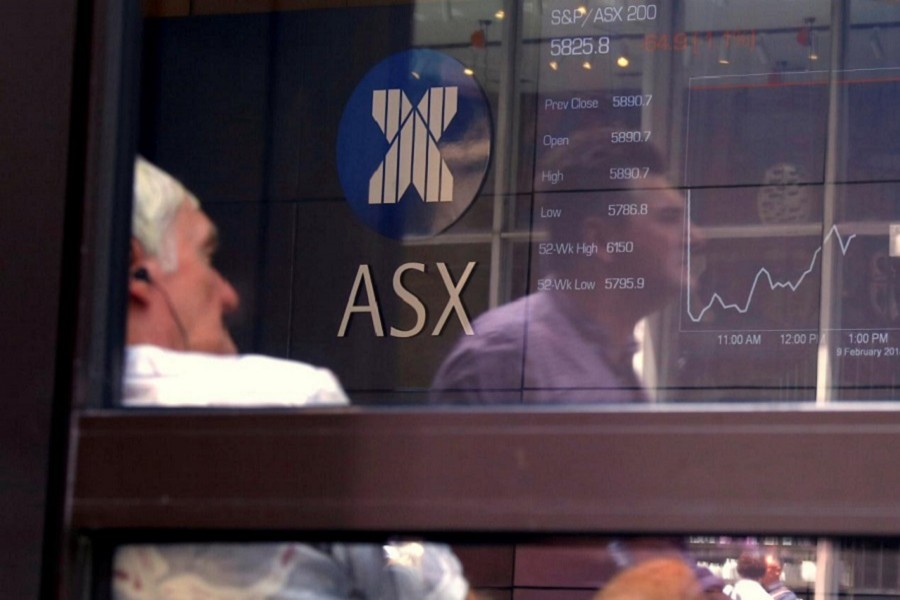Asian shares rebounded on Friday as comments from a Federal Reserve official eased worries about faster rate rises in the United States, while the safe-haven yen held on to its gains amid heightened volatility across markets.
Financial markets have fluctuated wildly this month as investors fretted about how fast the Fed might raise rates in the wake of data showing a pick-up in US inflation.
Even though broader US price pressures still appear modest for now, markets are now fully pricing in three rate hikes this year, one more than was seen just a few months ago, and some analysts now expect four.
That in turn has stoked anxiety that many central banks will start to tighten policy and raise borrowing costs, which will hit corporate earnings, which have boomed thanks to a synchronised uptick in global growth.
MSCI’s broadest index of Asia-Pacific shares outside Japan climbed 1.0 per cent, adding to the previous week’s 3.9 per cent gain.
It is still down more than 4.0 per cent in February so far, however, after global equity markets were mauled at the start of the month by worries that inflation is picking up.
Japan’s Nikkei edged 0.4 per cent higher and South Korea’s KOSPI index rose 1.1 per cent. China’s SSE Composite index and the blue-chip CSI300 each rose 0.7 per cent.
All Asian markets except Philippines eked out gains following a sell-off on Thursday after minutes of the Fed’s last meeting showed policy makers were confident about the economic outlook. That prompted some investors to boost the chance of faster rate hikes.
St Louis Fed President James Bullard tried to tamp down expectations of four rate hikes in 2018, instead of the widely anticipated three, saying on Thursday policymakers need to be careful not to increase rates too quickly because that could slow the economy.
That was enough to send US shares rallying, despite the negative lead from Asia and Europe. On Wall Street, the Dow added 0.7 per cent, the S&P 500 ended a tad firmer while the Nasdaq lost 0.11 per cent.
The Fed had caused a so called “taper tantrum” in May 2013 when it signalled it was time to stop pumping cash into the US economy, a move that created havoc in financial markets particularly Asia.
But analysts are more upbeat about the outlook for Asia despite prospects of rising US inflation and rates.
“Financial market volatility has not dented our constructive view on Asia’s growth outlook for this year,” said Khoon Goh Singapore-based Head of Research for ANZ.
“Higher inflation and a larger fiscal deficit in the United States will likely see US bond yields move higher, but improved fundamentals in Asia mean the region is better placed to weather this than in 2013.”
Analysts expect the market to be in a “holding pattern” ahead of a slew of important US January activity data on Tuesday, followed by global surveys on manufacturing activity on Thursday.
Currencies
The dollar sagged broadly on Friday after its recovery this week faded as US Treasury yields declined from their recent peaks.
Benchmark 10-year note yields were last yielding 2.9317 per cent, after rising to a four-year high of 2.957 per cent on Wednesday.
The euro was little changed at $1.2311 after gaining 0.4 per cent the previous day. The common currency has lost 0.75 per cent so far this week, following its ascent to a three-year top of $1.2556 on February 16.
The yen, which tends to benefit during times of heightened volatility or uncertainty, rose almost 1.0 per cent overnight to last fetch around 106.8 per dollar.
Oil prices hovered near two-week highs, supported by lower US crude inventories, but gains were capped by a surge in US exports.
US crude added 6.0 cents to $62.83 per barrel and Brent eased 1.0 cent to $66.38. Spot gold ticked lower to $1329.01 an ounce.


